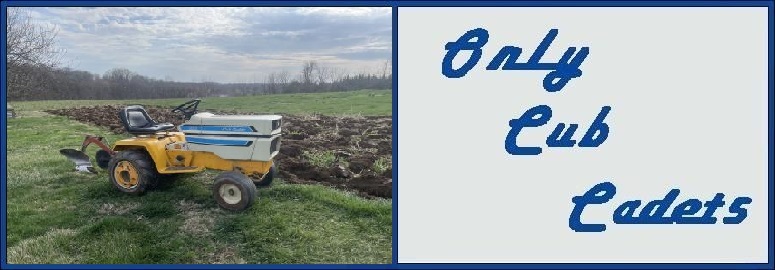
 |
Newby with 1512
Finally got round to tackling the 1512. I'm planning a restoration on my own terms for a working and not a show machine. Only known drive issue is R.H. trunnion seal leaking. I do not have the tools and expertise to remove the seal without removing the hydro unit. I thought I would then replace it without disassembly. Is it likely I have a bearing with excessive clearance which led to seal failure? Is there a procedure for checking maximum permissible radial clearance on the trunnion with the seal removed? I have no CC hydro experience but am generally suspicious of bearings associated with failed seals.
Do the experienced individuals here think I should get into the hydro and insure that I have no bearing issue rather than simply changing out the seal? I have manuals so hope to not ask a question found in a manual. I hope I did not miss this topic in my searches of this site. Thank you for any expert help in this regard. |
For whatever reason that I have yet to take the time to figure out, the seal on the RH side is always the one to leak. I've replaced more than a few of them. No reason at all to pull the hydro unit apart basically ever. They very seldom ever fail to the point of tearing them down. (Not saying that they don't..... just not very often) You will have to pull the rear end to change the seal, but that's it. (Whole thing as a unit.) Just drill a small hole in the seal, screw a drywall screw into it, then pull it with pliers and a pry bar. Drive the new one in. It will last about 300-400 hours and then it will probably leak again. You can get the seal at NAPA for like $5 (IIRC). I have the number, I can post it later as it isn't in front of me at the moment.
|
Quote:
|
Actually I pivoted the entire hydro/rear axle upwards and got easy access to remove the old seal with a small self tapping screw inserted into very small holes drilled into the seal. I wrapped an extremely thin strip of aluminum sheet I had handy inside the lip seal and slipped the seal past the snap ring groove before removing the insertion aid. Tapped it in place with a suitable socket and replaced the washer and snapring. I expect the procedure has been described here many times.
I thought my engine was OK but as I allowed it to get up to temperature, it started producing large bubbles of gas which displaced an equal amount of coolant so off came the head. The head shop charged me about $50 to inspect it and install one small thread insert. Gaskets were about $75 but I was lucky not to have a cracked head. I assumed it would now indicate coolant temps of about 200 deg. F but the Stewart Warner gauge I installed to replace the original reads what appears to be closer to 240 deg. than to 230 deg. with ambient air temperatures in the mid thirties F. (the SW gauge only reads to 240 deg.) I still have my original hood decal with the 230 deg. max operating temperature. I get mixed results when I attempt to judge if there is instrument error due to my gauge not being matched to the original Cub Cadet sender. When a hand is placed on the right hand side of the top of the radiator, it does not seem very hot (of course it is much hotter on the left near the inlet). When the cap is removed, it will boil which of course means it is above about 212 deg. F. The lower hose actually felt cool to the touch after the indication had reached about 230 deg.. Obviously it would warm up some given time. Assuming no instrument error of 10-20 degress, this engine is going to quickly exceed 230 deg in summer ambient temperatures. I will take the radiator to the radiator shop tomorrow. This is turning into a money pit but there are much more expensive forms of recreation. My last known issue is the (also unanticipated) leak of hydro oil from the top of one of the check valves on the hydro. I'm going to search the site to see what I can learn about them. |
Several ppl here use this fellows service
Ebay # 320670405175 for valves |
If the water is boiling, and the lower hose is cool..... either your water pump isn't circulating, or the radiator is plugged up. I'd check both.
Yes, diesels are expensive. Especially ones that say Kubota. |
As Jon mentioned have the radiator checked and cleaned, I'd replace the hoses, fan belt, water pump and the thermostat. Or at least inspect them.
This is the guy that re-builds the hydro valves. I've had very good luck with him. Machtech Direct 605 Furnace Rd. Conneaut Ohio 44030 Phone: 440-499-5813 Email: mark.machtech@gmail.com |
I am currently using the guy you linked to Sam, 2 valves rebuilt for $75. I have heard nothing but good things about his work. He has the valves a day or two and they r right back in the mail. I can't wait to get mine and run the cub again.
|
Don't forget to check the thermostat out. My 782D had an overheating problem that was caused by a sticking thermostat.
|
Quote:
|
| All times are GMT -4. The time now is 04:44 PM. |
Powered by vBulletin® Version 3.8.11
Copyright ©2000 - 2025, vBulletin Solutions Inc.